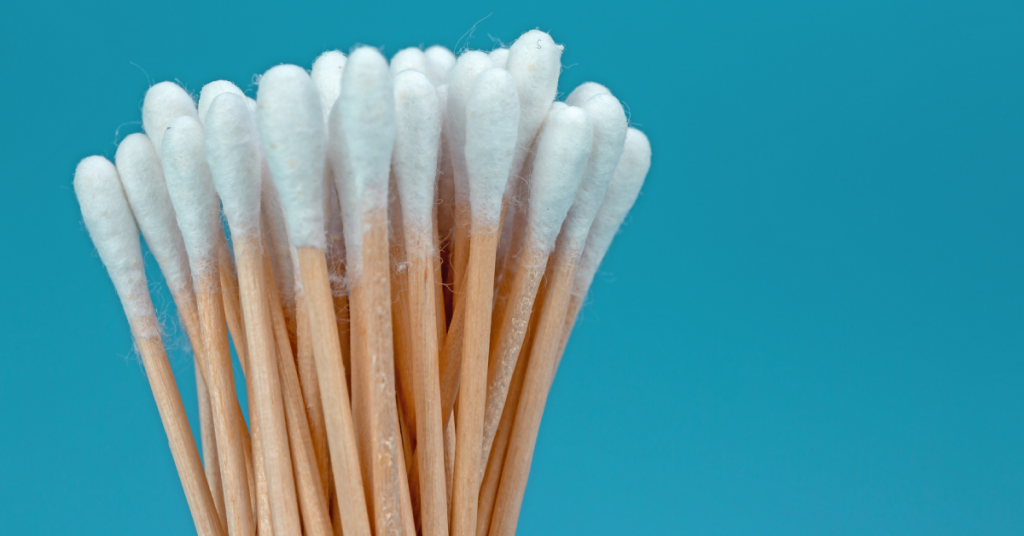For many, Q-tips (or cotton swabs) have been a go-to for ear cleaning since childhood. But what if this common practice was actually be doing more harm than good?
It turns out, the truth about Q-tips and ear cleaning is a little surprising. At Oakdale ENT, we want to set the record straight and provide some safe alternatives for keeping your ears healthy.
The myth of Q-tip cleaning
Many believe Q-tips effectively remove earwax buildup. However, the reality is quite different. Our ear canals are naturally self-cleaning. Earwax, also called cerumen, acts as a protective barrier, trapping dust, dirt, and even insects. It naturally migrates outwards, eventually drying and flaking off, or getting carried away by jaw movement.
Here’s why Q-tips can be a problem:
- Pushing wax inward: The cotton swab tip can easily push wax deeper into the ear canal, causing a blockage or impaction. This can lead to muffled hearing, pain, and even dizziness.
- Ear canal damage: The delicate skin of the ear canal is easily scratched or irritated by Q-tips. This can increase the risk of infection.
- Eardrum rupture: In the worst-case scenario, forceful insertion of a Q-tip can damage the eardrum, leading to significant hearing loss.
Signs you might need a professional cleaning
While your ears are self-cleaning, there are situations where you might need professional help:
- Excessive earwax buildup: If you experience persistent muffled hearing, fullness in the ear, or tinnitus (ringing in the ear), it could indicate excessive wax buildup.
- Pain or discomfort: Ear pain, itching, or a feeling of blockage can be signs of an ear infection or impaction.
- Frequent use of Q-tips: If you find yourself relying on Q-tips regularly to remove wax, it might be a sign your ears aren’t cleaning themselves effectively.
Read the story of how we all started using Q-tips incorrectly in the first place.
Safe alternatives for ear care
Here are some safe ways to care for your ears and avoid the risks associated with Q-tips:
- Warm compress: Applying a warm compress to the outside of your ear can help soften earwax, making it easier to naturally move out.
- Over-the-counter drops: Certain over-the-counter ear drops can help soften and loosen earwax. Look for solutions containing hydrogen peroxide, carbamide peroxide, or docusate sodium.
- Irrigation: This method involves gently flushing the ear canal with warm water using a bulb syringe. However, it’s important to use the correct technique and water temperature to avoid complications. We recommend consulting with one our our ENT specialists before trying ear irrigation at home.
- Professional cleaning: If you suspect excessive earwax buildup or have concerns about your ear health, it’s best to schedule an appointment. Oakdale ENT can safely remove earwax using specialized tools and techniques.
When to see come see Oakdale ENT
If you experience any of the following symptoms, it’s important to see an ENT specialist for proper diagnosis and treatment:
- Sudden or severe ear pain
- Persistent drainage from the ear
- Fever along with ear pain
- Difficulty hearing
- Dizziness or vertigo
- Ringing in the ear (tinnitus)
Taking care of your ears
By understanding the role of earwax and avoiding the risks of Q-tips, you can take better care of your ears and prevent potential problems. Remember, your ears are amazing self-cleaning machines. In most cases, they’ll take care of themselves! But if you have any concerns, don’t hesitate to reach out to Oakdale Ear, Nose & Throat Clinic at 763-233-5755 or request an appointment online.
We’re here to help you maintain optimal ear health.
